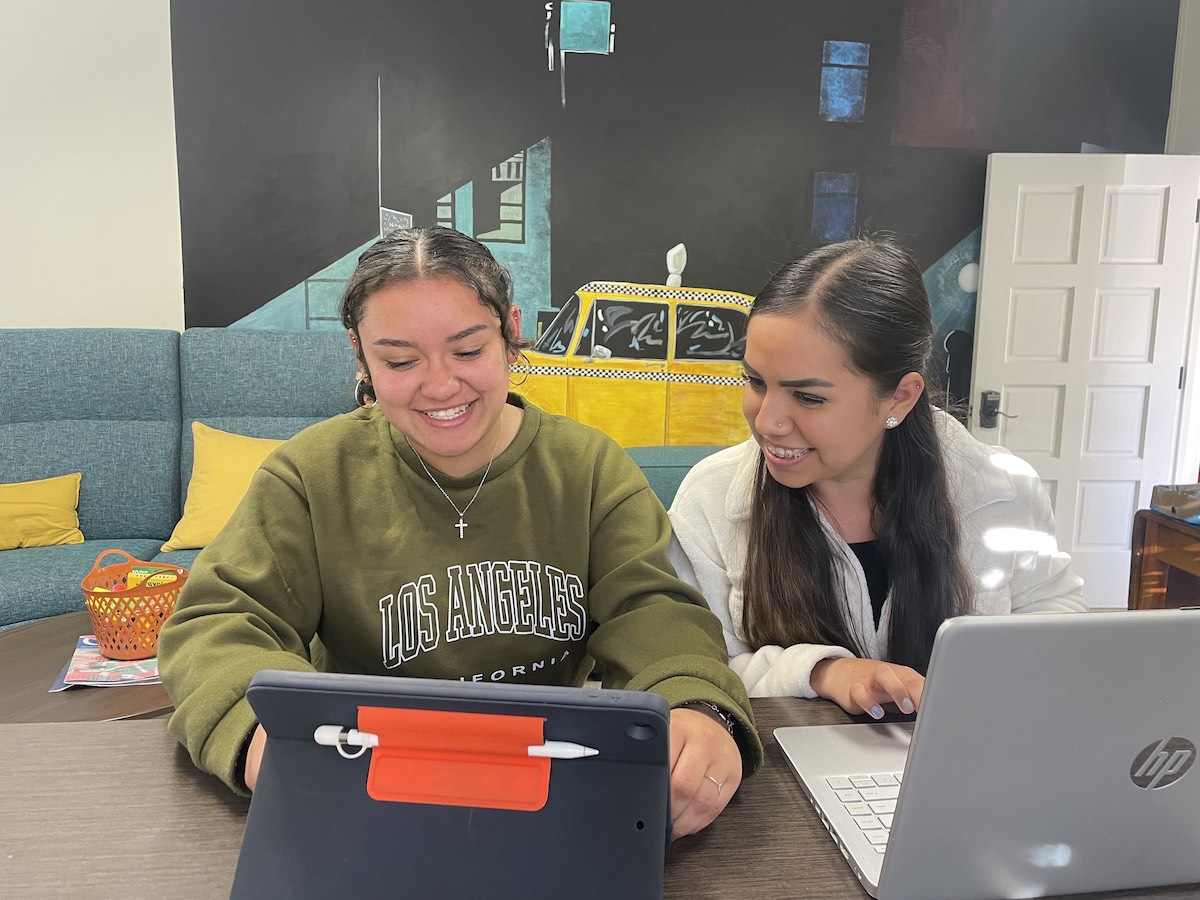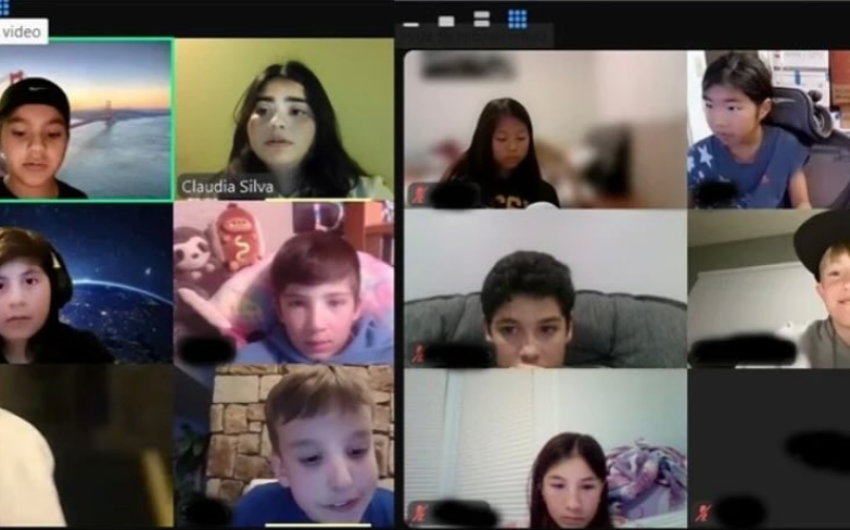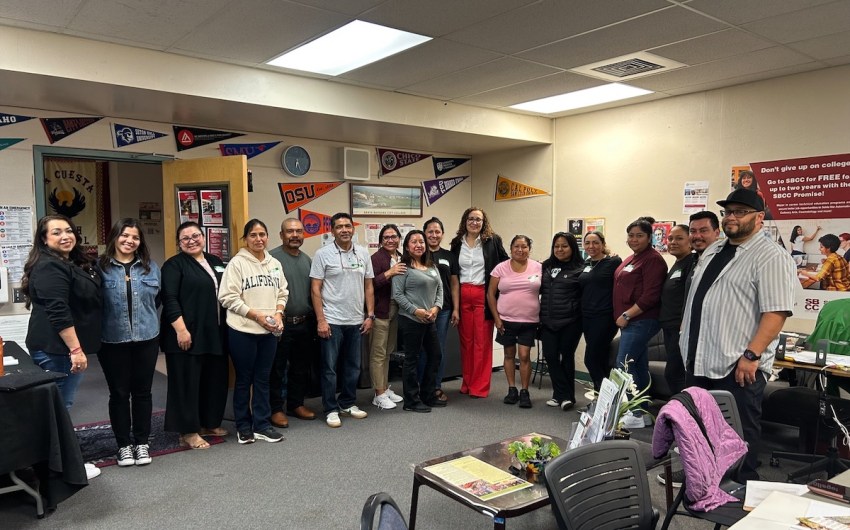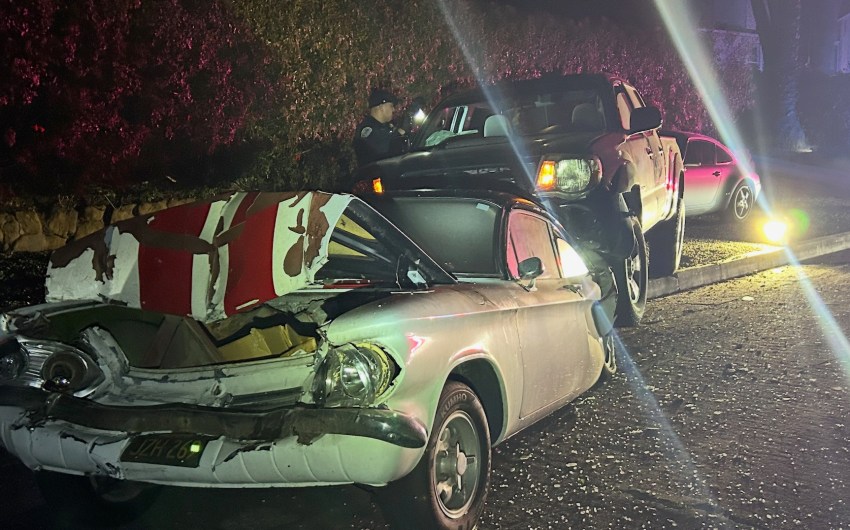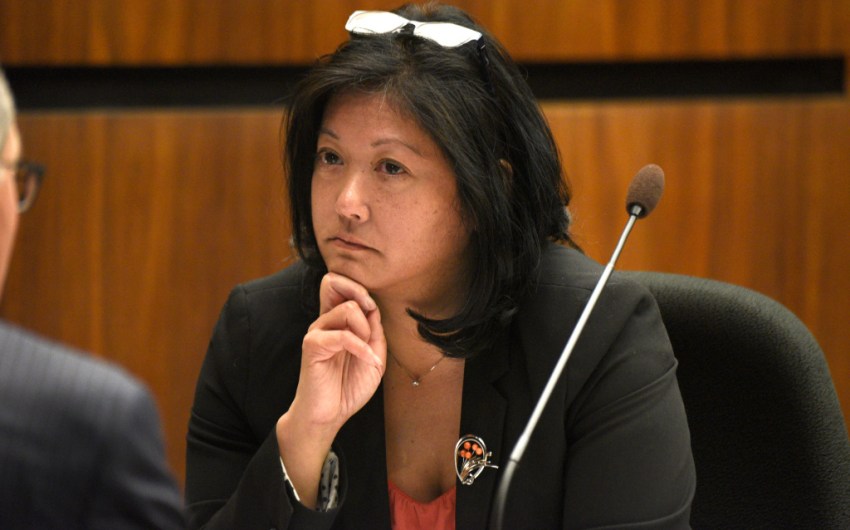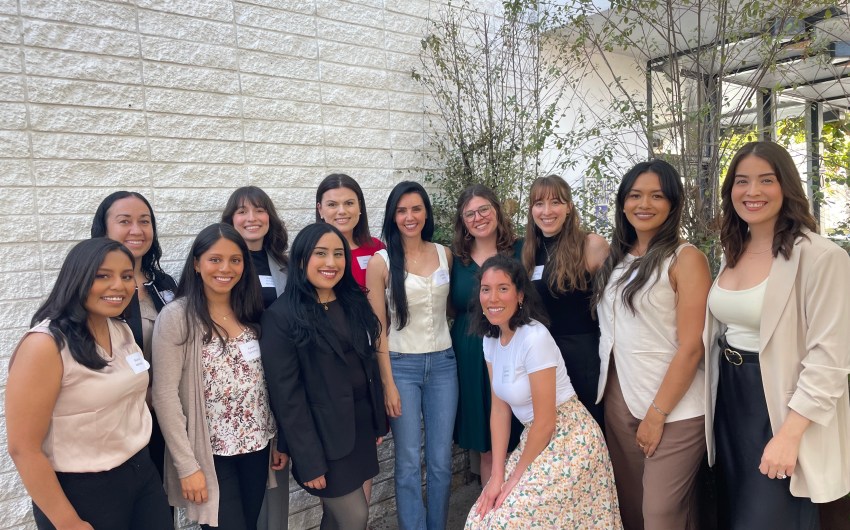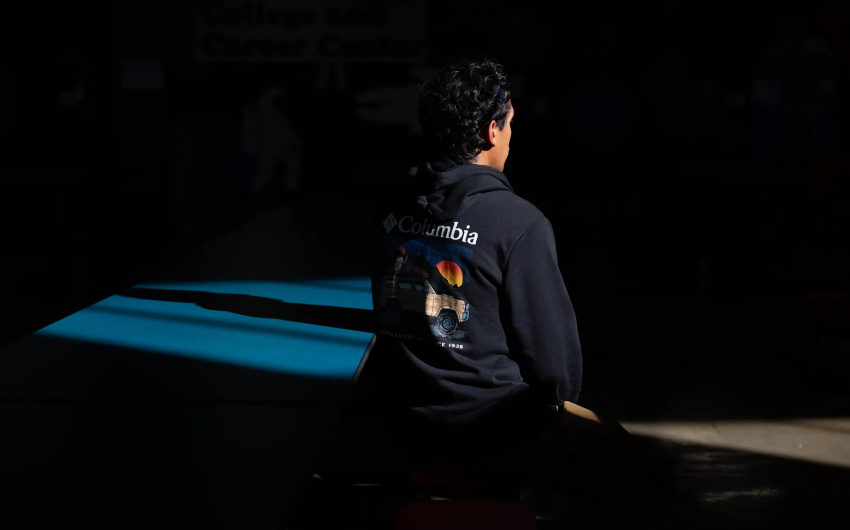When Yazmín Vega Escalera opened her laptop on April 9, 2024, it was still dark outside. Officially, her workday wouldn’t start for another three hours, but this was no day to sleep in.
Yazmín was worried. The Free Application for Federal Student Aid (FAFSA) deadline was fast approaching, and her students and their families were feeling lost and overwhelmed. With a fresh cup of coffee in hand, she tried not to wake her roommates as she opened the FAFSA website, clicked on the virtual assistant “Live Chat” link, and settled in for another day of waiting.
I first met Yazmín a year earlier, when she interviewed for a position at Mission Scholars. We were looking for a full-time program coordinator whose job would be to focus exclusively on college affordability. Our organization was about to enter its fifth college application season; our cohort sizes had tripled, and we knew that our Scholars and their families would need someone dedicated to financial aid. We also knew that the FAFSA was planning a massive transformation for the 2023-2024 application year. It would be a much-needed update to a process that was notoriously clunky and confusing, and we would need to be prepared.
As Yazmín settled into her position as program coordinator, she dedicated many hours to FAFSA webinars and training. She assisted our Scholars as they collected the financial documents required to submit their FAFSA applications, creating a workshop calendar for them that would begin in early December of 2023, when the Department of Education was due to release the new “Better FAFSA.”
After all of her preparation, Yazmín felt ready. But she and thousands of school counselors and community-based organizations nationwide were in for a rude awakening.
The first sign of the problems to come was the announcement that the Better FAFSA’s release date would be delayed until the end of December, nearly a month later than planned. On its own, this wasn’t too concerning: Our Scholars could handle a four-week delay.
December passed, and both our staff and our Scholars went on holiday break. When everyone returned on January 3, they were confronted with a FAFSA so full of glitches that applications could not be submitted for the rest of the month.
Even this delay would have been manageable, but things didn’t get much better in February or March. Gradually, it became clear to Yazmín and her colleagues that a large percentage of students were about to get left behind.
“After nearly four months of jumping through hoops, 12 of our 29 students still hadn’t submitted,” Yazmín said. “They couldn’t submit, because of the technical issues of the FAFSA website and because many of their parents’ identity verifications were incomplete.”
This year, “Identity Verification” was a key part of the Department of Education’s approval process for applicants with undocumented parents, also known as mixed-status families. For the parents, the process was supposed to be simple: Complete an attestation and validation of identity form and submit some current identity documents, then wait three business days for a confirmation email.
As issues mounted within the overwhelmed Federal Student Aid office, however, the expected wait time was increased to two weeks. Even that would have been fine, except that some families never received their confirmation emails and were left wondering about their status. Others had their forms lost — never received, according to the FSA — and had to start the process all over again. What was supposed to have taken weeks ended up dragging on for months.
“There were nights I could barely sleep because all I could think about was FAFSA,” Yazmín said. “Our Scholars had done everything right. They had submitted their college applications on time. They had completed dozens of scholarship applications. They had been in our office week after week trying to complete the final phase of the financial aid process, which would ultimately determine whether they could actually afford to attend the four-year colleges they had been accepted to. But because of all the FAFSA glitches and delays, their futures were still in limbo.”
With the May 1 college enrollment deadline approaching and many Mission Scholars students being asked to commit to colleges without knowing whether they could cover the cost, options were narrowing rapidly. Frantic messages flooded Yazmín’s inbox from students and parents who wanted to give up.
“The scholarship agency needs my FAFSA summary to move forward, but my dad hasn’t been able to get through the identity verification process and can’t sign the form,” one Mission Scholar told Yazmín. She feared the verification delay could jeopardize her hard-earned four-year college opportunities, despite all the effort she put into the application process. That student wasn’t alone. As the deadline approached, applicants across the nation were beginning to panic.
The origins of this debacle lay in the FAFSA Simplification Act passed by Congress in 2020. To comply with this new law, the Department of Education had launched an application intended to be “simplified, streamlined, and redesigned.” That launch was two months later than usual, but it seemed like it would be worth the wait. The notoriously confusing, labor-intensive process would now be easy. It would take, according to the FAFSA website, “about an hour.”
The reality, of course, was starkly different. The web portal was riddled with bugs, redundancies, and dead ends, and getting through to one of the overwhelmed agents for help was nearly impossible. The most common experience relayed by Mission Scholars students was a long wait followed by the dreaded “unusually high call volume” message and disconnection.
When a parent finally did manage to get through to a live agent, they faced a new set of problems. Many agents were unfamiliar with the identity verification process, so the callers would be misrouted and would often have to begin the long wait all over again. There was also a paucity of Spanish-speaking representatives, making communication impossible for many of the families the Better FAFSA was intended to serve.
Most Mission Scholars students encountered difficulty completing the process, but those from mixed-status families had it the worst. Identity Verification was proving to be a nightmare, and time was quickly running out.
So on the morning of April 9, Yazmín got up before dawn, which was the only time she could interface with many of her students’ working-class parents. There were still families with unsubmitted FAFSA applications, and Yazmín was determined to get them across the finish line.
“I had a personal computer, a work laptop, and a phone,” she said. “So I could log into three different FAFSA accounts at once.”
Acting as a silent intermediary between the students’ parents and online chat agents, and with the parents’ consent, Yazmín spent hours on hold and in online waiting rooms. When she finally got ahold of a representative, she translated online chats in real time for the parents, often coordinating all of this while they were on breaks from their jobs.
It was a long, arduous, frustrating day, but by the end of it, three more Mission Scholars parents’ identities had been verified and their FAFSA forms submitted.
If this was just about Mission Scholars students, that would be the end of the story. Thanks to Yazmín’s efforts, we ended up with a 100 percent submission rate. The verification delays caused some of our students to have fewer college choices than they should have, but it was still a very successful year for our Scholars.
But there are many students who don’t have the benefit of tireless guidance from someone like Yazmín, and for many of those students, the ramifications of the FAFSA debacle were heartbreaking. Nationwide, by early August there were 220,000 fewer submissions this cycle, a 10 percent decline overall. Locally, our students fared even worse. At Santa Barbara’s three public high schools, the FAFSA submission rate dropped by as much as 26 percent.
I’ve heard many of these students’ stories. Without that federal financial aid, some of them were unable to commit to colleges that had accepted them. Others gave up on college altogether, deeming it unaffordable.
The new FAFSA was supposed to have helped low-income students in particular, not just by making it easier to apply, but by loosening the requirements for aid recipients. Unfortunately, it hurt many low-income students instead. Nationwide, the steep decline in applications resulted in millions of aid dollars going unclaimed.
For Santa Barbara students, this should serve as a cautionary tale. FAFSA applications loom in the near future once more, and once again, the release has been delayed from October to December. Understandably, there are already rumblings about whether the Department of Education will be able to handle the workload.
College applicants who intend to rely on financial aid should hope for the best, but they and their families should also prepare for the worst. If they’re applying for FAFSA, they should know that a repeat of last year’s difficulties could be a real possibility.
Yazmín knows this, and she is advising our Mission Scholars students accordingly. “Especially for mixed-status families, I’m telling them to create their FSA IDs and for parents to start the identity verification process as soon as possible,” Yazmín said. “Make sure all of your financial documents have been filed on time. Take advantage of any workshops offered at your schools. Don’t try to do this alone.”
“Above all,” she added, “be persistent and remain calm. Remember that everyone is going through this, too.”
Cassie Lancaster is the executive director of Mission Scholars.
Premier Events
Wed, Dec 31
9:00 PM
Santa barbara
NEW YEAR’S Wildcat Lounge
Sun, Dec 21
2:00 PM
Santa Barbara
Ensemble Theatre Company Presents “The Complete Works of Jane Austen, Abridged”
Fri, Dec 26
7:00 AM
Solvang
Solvang Julefest
Sat, Dec 27
7:00 PM
Santa Barbara
Schnack ‘n Bari Jazz Trio at Roy
Wed, Dec 31
6:15 PM
Santa Barbara
NYE 2026 with SB Comedy Hideaway!
Wed, Dec 31
9:00 PM
Santa barbara
NEW YEAR’S Wildcat Lounge
Wed, Dec 31
10:00 PM
Santa Barbara
In Session Between Us: Vol. I NYE x Alcazar
Wed, Dec 31
10:00 PM
Santa Barbara
NYE: Disco Cowgirls & Midnight Cowboys
Thu, Jan 01
7:00 AM
Solvang
Solvang Julefest
Thu, Jan 01
11:00 AM
Santa Barbara
Santa Barbara Polar Dip 2026
Sat, Jan 03
8:00 PM
Santa Barbara
No Simple Highway- SOhO Saturday January 3rd 2026!
Wed, Dec 31 9:00 PM
Santa barbara
NEW YEAR’S Wildcat Lounge
Sun, Dec 21 2:00 PM
Santa Barbara
Ensemble Theatre Company Presents “The Complete Works of Jane Austen, Abridged”
Fri, Dec 26 7:00 AM
Solvang
Solvang Julefest
Sat, Dec 27 7:00 PM
Santa Barbara
Schnack ‘n Bari Jazz Trio at Roy
Wed, Dec 31 6:15 PM
Santa Barbara
NYE 2026 with SB Comedy Hideaway!
Wed, Dec 31 9:00 PM
Santa barbara
NEW YEAR’S Wildcat Lounge
Wed, Dec 31 10:00 PM
Santa Barbara
In Session Between Us: Vol. I NYE x Alcazar
Wed, Dec 31 10:00 PM
Santa Barbara
NYE: Disco Cowgirls & Midnight Cowboys
Thu, Jan 01 7:00 AM
Solvang
Solvang Julefest
Thu, Jan 01 11:00 AM
Santa Barbara
Santa Barbara Polar Dip 2026
Sat, Jan 03 8:00 PM
Santa Barbara

